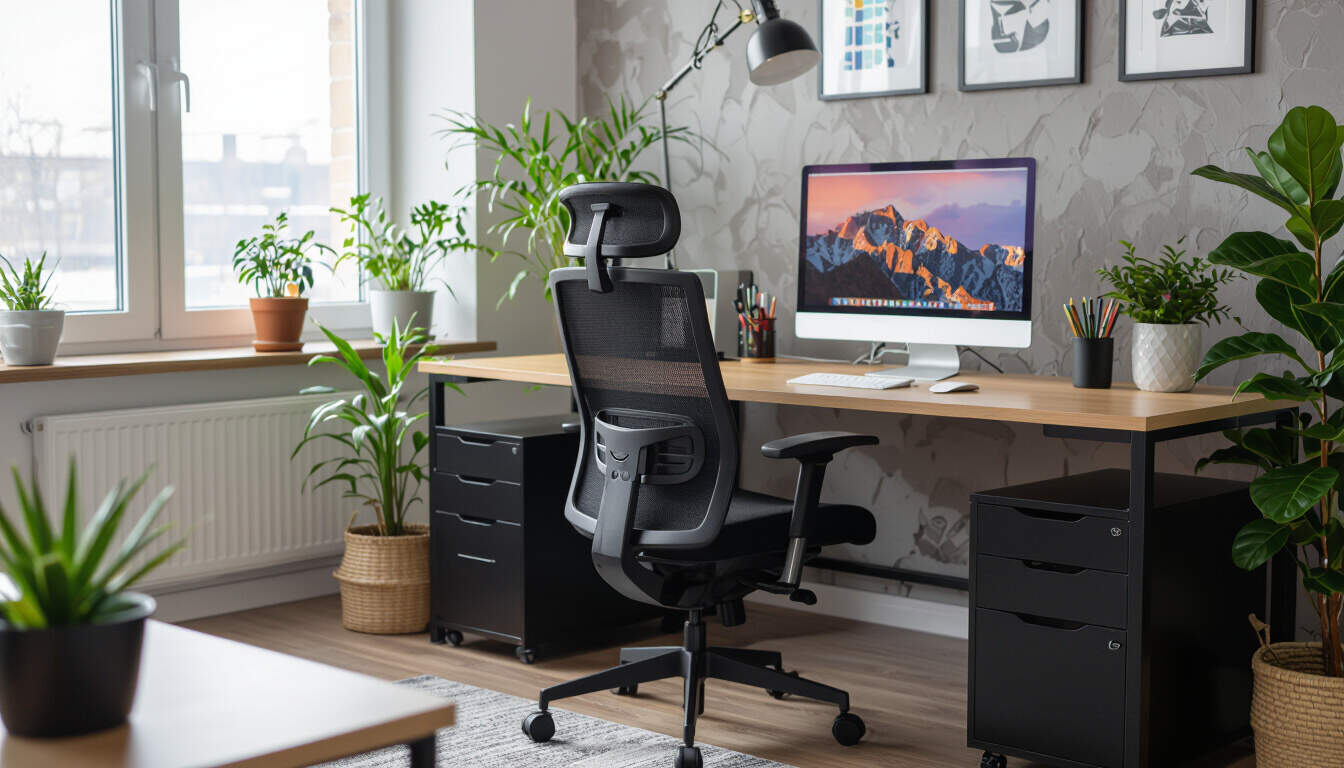Ergonomic Workspaces for Reducing Cognitive Load
 by Marlene Keeling
by Marlene Keeling
Discover how setting up an ergonomic workspace can ease mental overload and boost focus in daily routines. This article offers practical strategies for students and professionals to enhance productivity through simple adjustments.

In our busy lives, managing mental demands is essential for maintaining focus and well-being. Ergonomic workspaces play a key role by minimizing physical discomfort, which in turn helps free up cognitive resources. For instance, a well-arranged desk can prevent back pain, allowing the mind to concentrate on tasks without distraction.
Cognitive load refers to the amount of working memory used for processing information. When physical strain adds to this, it creates extra burden that affects performance. By adopting ergonomic principles, individuals can create environments that support easier information processing. A comfortable chair and proper screen height are simple changes that make a difference.
One effective tip is to adjust your chair so that your feet rest flat on the floor. This position reduces strain on the lower body and promotes better posture. Good posture, in turn, eases the cognitive effort needed to maintain balance during long work sessions.
Lighting is another important factor. Poor lighting can cause eye strain, leading to fatigue and reduced concentration. Opt for natural light where possible or use adjustable lamps to avoid glare. This helps keep cognitive load low by preventing visual discomfort.
Organizing your desk can also streamline workflows. Keep essential items within easy reach to avoid unnecessary movements. For students, this might mean placing books and notes in a logical order, while professionals could arrange tools like keyboards and mice for quick access.
Technology integration offers further benefits. Using devices with adjustable settings, such as monitors that tilt, allows for personalized setups. These adjustments help reduce the mental energy spent on adapting to suboptimal conditions.
In practice, many find that standing desks provide relief from sedentary positions. Alternating between sitting and standing can improve blood flow and sustain energy levels throughout the day. This variation supports sustained attention and reduces the toll on mental resources.
For those in high-demand fields, like coding or writing, wrist supports can prevent repetitive strain injuries. By protecting physical health, these aids allow for longer periods of productive work without increasing cognitive demands.
Daily routines benefit greatly from these setups. Start your day by assessing your workspace and making minor tweaks. Over time, these habits build into a system that naturally offloads mental pressure.
Benefits for Different Groups
Students often face heavy workloads, juggling classes and assignments. An ergonomic workspace can help by creating a dedicated study area that minimizes distractions. For example, using a desk at the right height ensures that note-taking feels effortless, leaving more room for learning new concepts.
Professionals, on the other hand, deal with meetings and deadlines. A setup with ergonomic keyboards can reduce the cognitive effort required for typing reports or emails. This efficiency translates to better time management and less overall stress.
Incorporating breaks is crucial. Set timers to remind yourself to step away and stretch. These pauses allow the brain to recover, effectively managing cognitive load over extended periods.
Personalization is key to success. Experiment with different configurations to find what works best for you. Some may prefer noise-cancelling headphones to block out sounds, while others might benefit from plants that improve air quality and mood.
Practical Implementation Tips
- Choose a chair with lumbar support to maintain spinal alignment.
- Position your computer screen at eye level to avoid neck strain.
- Use keyboard trays if needed to keep wrists neutral.
- Ensure room temperature is comfortable to prevent discomfort from heat or cold.
- Invest in footrests for added leg support during long sessions.
These tips are straightforward and require minimal investment, yet they yield significant returns in mental clarity.
Ultimately, by focusing on physical comfort, we pave the way for sharper mental performance. The connection between body and mind means that small changes in your environment can lead to profound improvements in daily life.
